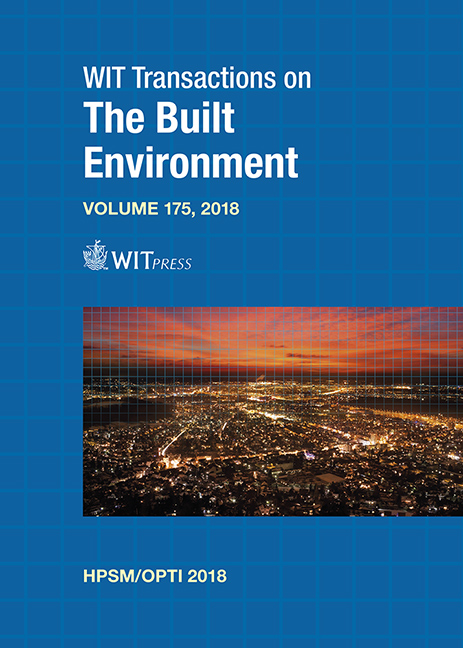CREEP RUPTURE LIFE AND INTERLAMINAR SHEAR STRENGTH OF WATER-ABSORBED GREEN COMPOSITE WITH PLAIN WOVEN NATURAL FIBER CLOTH
Price
Free (open access)
Transaction
Volume
175
Pages
10
Page Range
49 - 58
Published
2018
Size
662 kb
Paper DOI
10.2495/HPSM180061
Copyright
WIT Press
Author(s)
HIDEAKI KATOGI, KENICHI TAKEMURA, ATSUHIRO HAYAMORI
Abstract
To ensure safety of electric vehicles using green composites, this study examined the interlaminar shear strength, creep rupture strength, and useful life of plain woven jute fiber cloth reinforced polylactic acid after water immersion. The fiber volume fraction of the green composite was 40%. Water absorption tests were conducted of the green composite comprising jute fiber and polylactic acid (PLA). Tensile creep tests of green composite and jute fiber were conducted after water immersion. The maximum stress was 60–90% of tensile strength. The environmental temperature was room temperature. Short beam testing of double-notched green composite was also conducted after water immersion. Results show the following. When water absorption tests were conducted, the water absorption rates of green composite, jute fiber and PLA at 24 hr were 9%, 3.4% and 0.3%, respectively. The creep rupture strength of 9% water absorbed green composite was lower than that of non-water-absorbed (non-absorbed) green composite. However, the creep rupture strength of 3.4% water absorbed jute fiber was slightly higher than that of non-absorbed jute fiber. For maximum stress of 40 MPa, the creep rupture life of 9% water absorbed green composite was much shorter than that of the non-absorbed green composite. Interlaminar shear strength of 9% water absorbed green composite was lower by 11% than that of the non-absorbed green composite. Water penetrated to the fiber–resin interface when water absorption test of green composite was conducted until 24 hr. Therefore, the interlaminar shear strength, creep rupture life, and green composite strength were decreased mainly because of the decrease of fiber–resin interfacial adhesion as a result of water penetration.
Keywords
green composite, creep rupture, interlaminar shear strength, natural fiber, polylactic acid, residual tensile strength, water absorption





